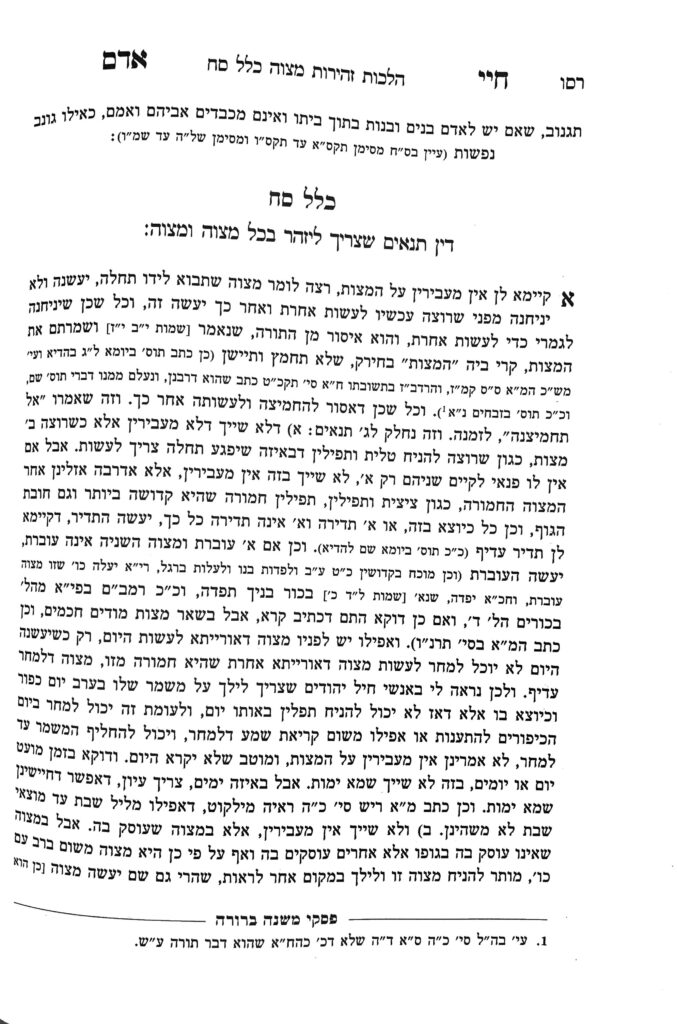We are continuing in siman 1, where the Chayei Adam introduces the concept of ain ma’avirin al hamitzvos. We have learned the Chayei Adam holds that there are three limitations to this concept, in which ain ma’avirin would be superseded. Yesterday, we began learning about the first limitation, when a person would not have time to perform both mitzvos. In such a case, one performs the mitzvah which is more chamur. The Chayei Adam gave three examples as to how to determine which is weightier: which has a greater level of kedusha, which is more tadir, or which has a time limit.
Today, the Chayei Adam will further clarify the concept of a mitzvah which is more chamur.
The Chayei Adam clarifies that even if one has the opportunity to perform a mitzvah deoraysa today, but by doing so they will lose out on a more chamur mitzvah deoraysa tomorrow, they should ignore the current mitzvah in favor of waiting for the mitzvah which is more chamur. This point is a chiddush, because one could argue that the mitzvah which will occur tomorrow should not be taken into consideration since it is not yet in existence and thus does not contend with the current mitzvah. Nevertheless, one takes it into consideration and acts accordingly.
The Chayei Adam gives the example of one who is in the army and has days for duty assignments. They are given the choice of taking duty on erev yom kippur at the expense of forgoing tefillin but being able to fast on Yom Kippur, or taking duty on Yom Kippur at the expense of forgoing fasting but being able to put on tefillin the day before. Alternatively, they will be able to fulfill tefillin and fasting, but will not be able to recite Shema on whichever day they take duty.
The Gemara in Zevachim teaches us that a day which is kadosh causes its mitzvos to be more kadosh (i.e., become more chamur) as well. The Gemara learns this idea from the korban tamid, where the Gemara says that the korban tamid of Shabbos is more chamur than the korban tamid during the week.
The Chayei Adam holds that since Yom Kippur is a yom kadosh, it is better to lose the mitzvos of Erev Yom Kippur in exchange for performing mitzvos on Yom Kippur, because those mitzvos are more chamur. We learn from here the extent to which the Chayei Adam understands that ain ma’avirin is limited by a mitzvah of greater weight.
Although this is the opinion of the Chayei Adam, we will learn tomorrow, be’ezras Hashem, that the Mishnah Berurah holds differently.
Summary
There are three limitations to the application of ain ma’avirin:
- If one is only able to fulfill one of the mitzvos,
- in which case they perform the mitzvah which carries greater weight;
- Or if one of the mitzvos is more tadir;
- Or if one of the mitzvos has a time limit.
In these cases, ain ma’avirin is superseded.
- Regarding a mitzvah which carries greater weight, the Chayei Adam holds that one would even ignore a mitzvah deoraysa applicable today in exchange for fulfilling a more chamur mitzvah deoraysa the next day (we will see the Mishnah Berurah’s opinion).



